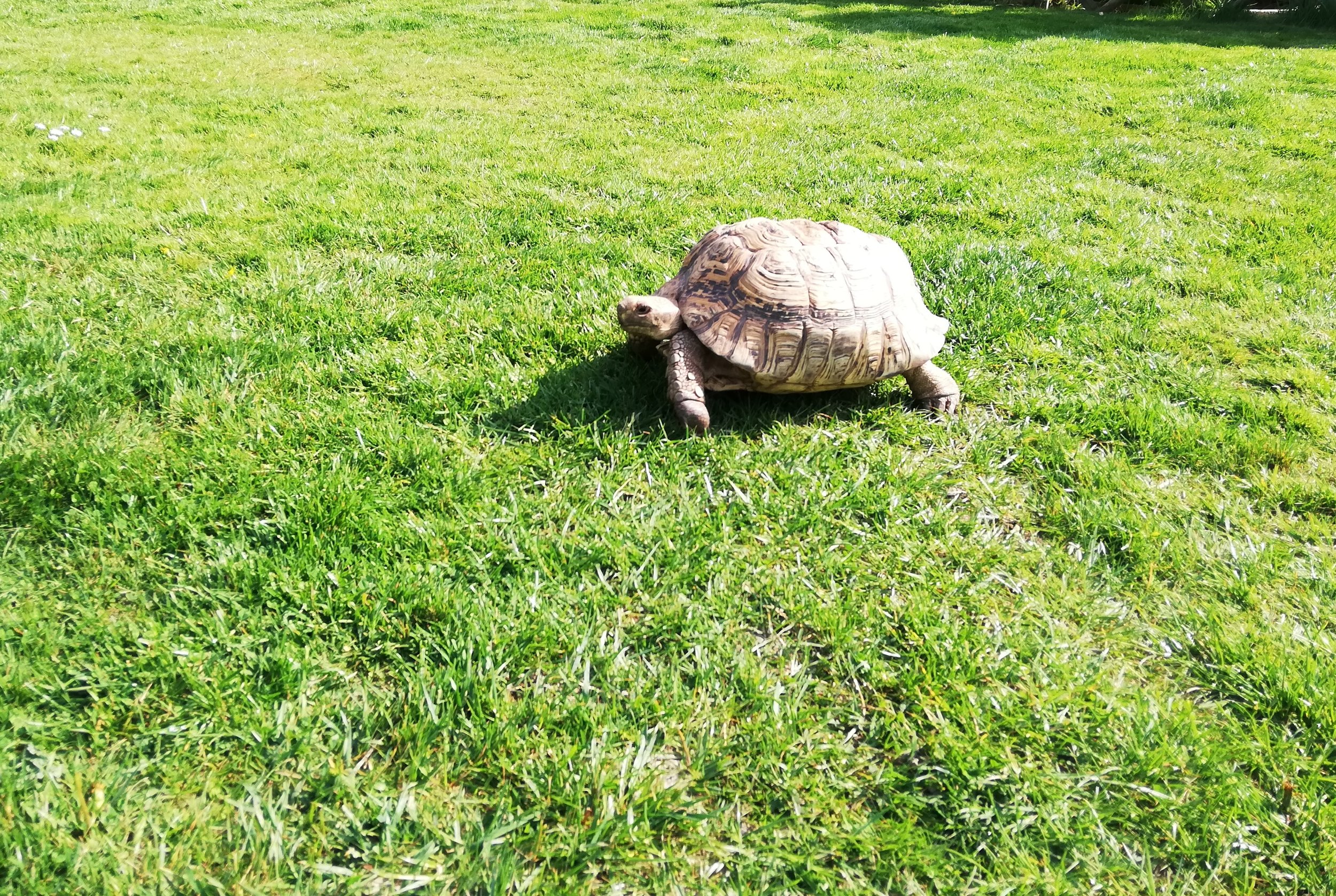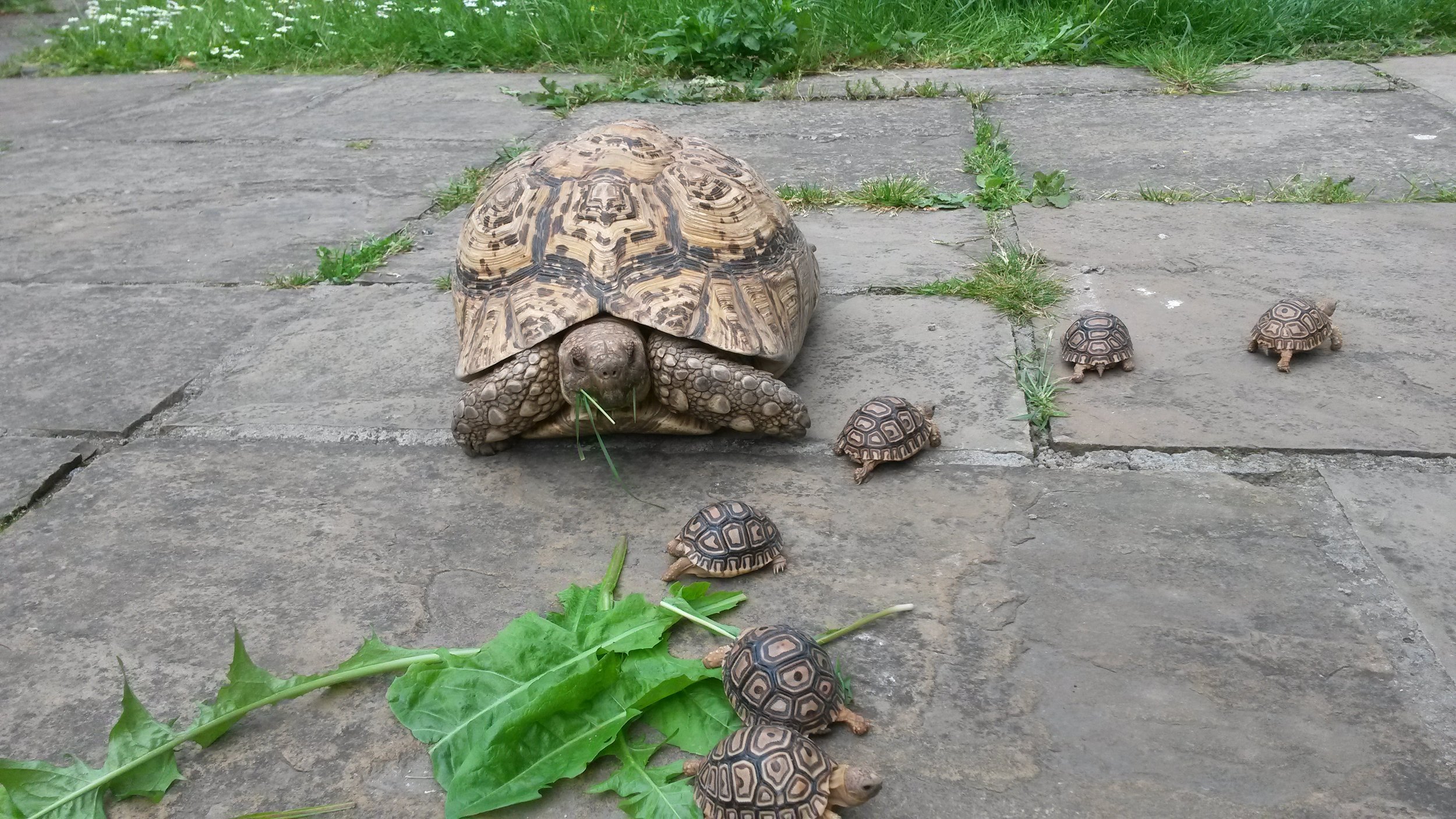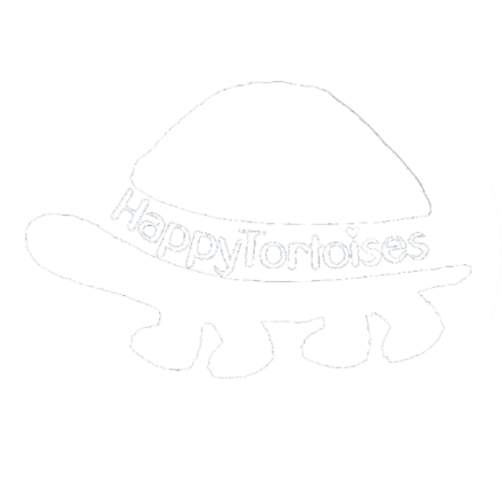
Leopard Tortoises
The leopard tortoise (Stigmochelys pardalis or sometimes referred to as Geochelone Pardalis) is a large tortoise with attractive markings that can be found in the wild in Southern and Eastern Africa. They favour savannahs (grassy plains with fewer trees), semi-arid, thorny and grassland habitats.
They graze mostly on mixed grasses (with over 70% of their diet made up of these grasses) as well as weeds, succulents, thistles and prickly pear (fruits and pads) found in their natural habitat.
For shelter against both very hot and very cold weather, leopard tortoises use abandonded holes made by foxes, jackal, and aardvarks as well use using large plants and tall grasses to shelter under.
They are considered a large tortoise breed and some adults can reach over 2ft long, but more typically they are between 1-1.5ft long.
In the past there were two subspecies of the leopard tortoise recognised: Geochelone Pardalis Pardalis and Geochelone Pardalis Babcocki. The differences between the subspecies mentioned were size and shell shape of adults, number of dots of shell of babies (from multiple spots per scute for one subspecies to one or no spots per scute for the other species). At present only one species of leopard tortoise is now recognised as there was too much overlap and inconsistencies between the two subspecies, so as a result it's easier to not recognise the subspecies of this breed of tortoise.
In captivity, we need to offer as close to their natural diet as possible by offering them a mix of around 70% grasses/hays with 30% tortoise-safe weeds and flowers. Their health will suffer if incorrect foods are given and long term your tortoise could suffer irreversible health problems, sometimes even fatal. I sell specially prepared seed mixes for Leopard tortoises for you to grow the perfect blend of food for them.
I personally recommend against giving fruit to this species as it can lead to diarrhoea or gut problems. In captivity it is also advisable to offer an environment that is as close to their natural habitat as possible: from UVB, soil, humidity, hiding places, and plenty of space to name a few.
Leopard tortoises do NOT hibernate and in captivity we need to offer them heat, UVB, light all year around.
Please see my care sheet for more details on captive-raised leopard tortoises:
Adult Leopard Tortoise
Baby Leopard Tortoise



